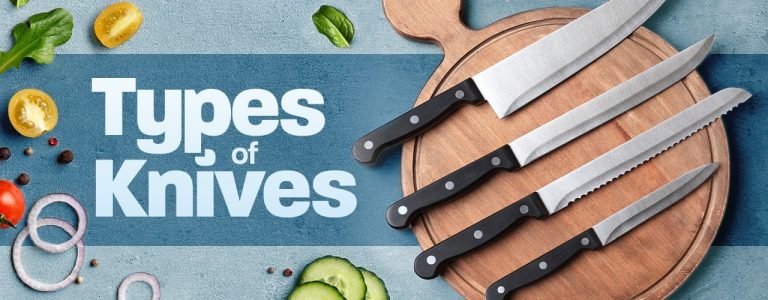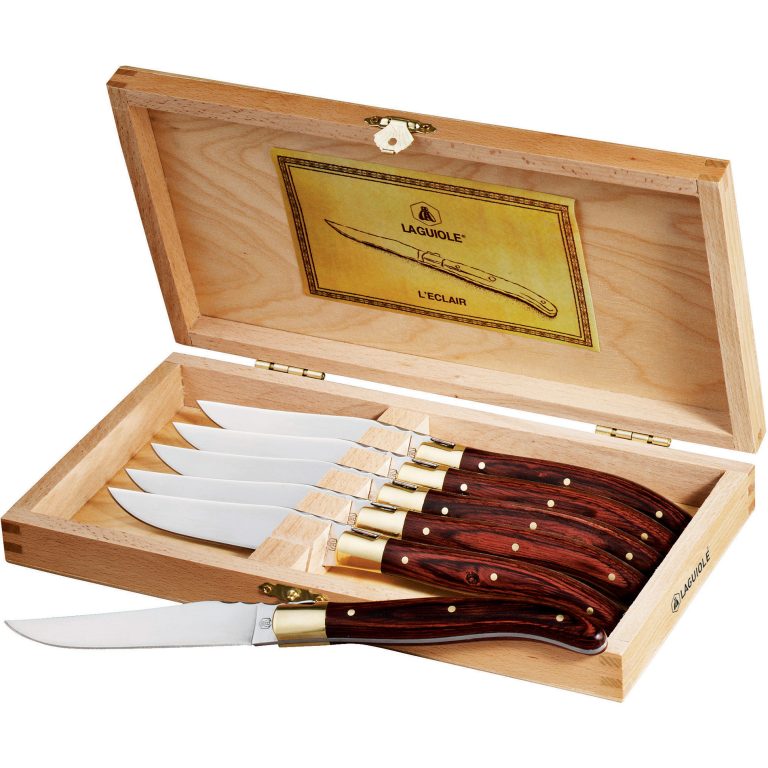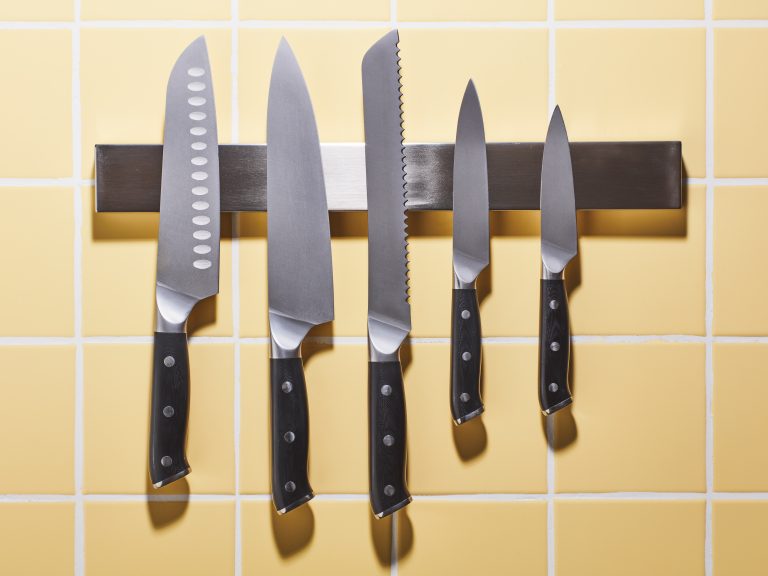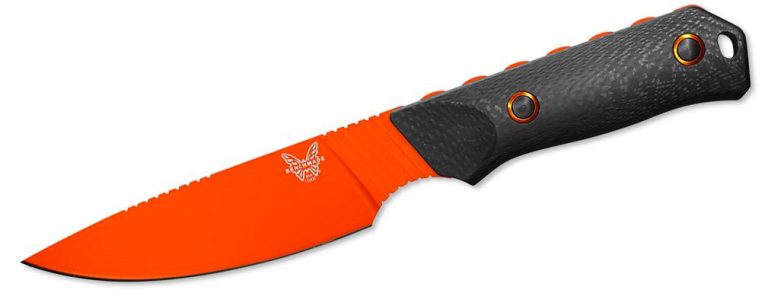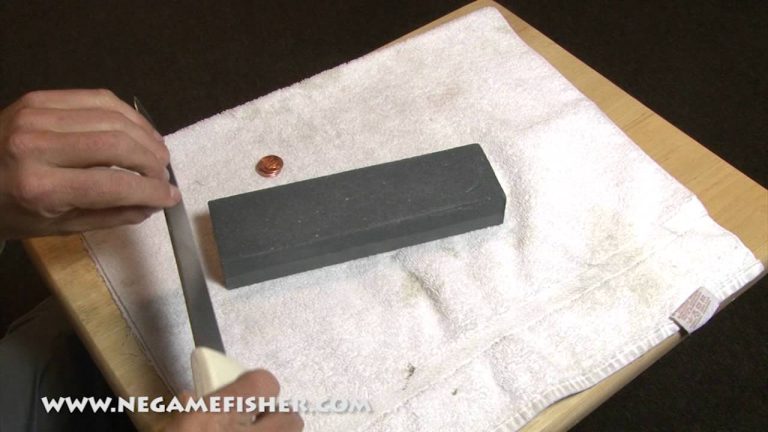How to Handle a Fishing Knife Safely
To handle a fishing knife safely, always keep your fingers away from the blade and use a firm grip to maintain control while cutting or cleaning fish. When handling the knife, ensure that the blade is pointed away from your body and others, and be cautious of any slippery or unstable surfaces.
Practicing these safety measures will help prevent accidents and ensure a safe fishing experience. As an essential tool for anglers, a fishing knife is invaluable for tasks such as scaling, filleting, and preparing fish. However, without proper caution, this tool can cause serious injuries.
We will discuss essential guidelines and tips for safely handling a fishing knife, allowing you to enjoy your fishing trips without compromising your safety.
Understanding The Risks Associated With A Fishing Knife
Understanding the Risks Associated with a Fishing Knife
When handling a fishing knife, it is crucial to be aware of the potential injuries and accidents that can occur. Fishermen must prioritize safety and adopt proper handling techniques to prevent harm. One of the most important aspects of safe knife use is understanding the risks involved. Improper usage can result in severe injuries like cuts, punctures, or lacerations. Any attempt to rush through tasks or disregard safety precautions can have detrimental consequences. It is imperative to handle the knife with care, maintaining a firm grip at all times. Always keep your fingers away from the blade‘s path and never use excessive force when cutting or cleaning fish. Proper storage of the knife is also crucial to avoid accidental cuts when reaching for other tools or equipment. Understanding these risks and prioritizing safety measures is essential for fishermen to handle a fishing knife safely.
Essential Tips For Safe Handling Of A Fishing Knife
When it comes to handling a fishing knife safely, there are essential tips to keep in mind. First and foremost, choosing the right knife for the task is crucial. Consider the size, shape, and material of the blade based on your needs. Once you have the knife, proper grip and positioning are crucial for safe handling. Ensure your fingers are away from the blade and maintain a firm hold. Keeping the knife sharp is also important – a dull knife is more likely to slip and cause accidents. Regularly sharpen the blade using appropriate tools. When not in use, safe storage and transport are essential. Use a sheath or blade cover to protect yourself and others. Remember to secure the knife and avoid putting it in easily accessible places. By following these tips, you can handle a fishing knife safely and avoid accidents.
Step-By-Step Guide To Safely Using A Fishing Knife
Step-by-Step Guide to Safely Using a Fishing Knife
When handling a fishing knife, it’s crucial to prioritize safety to avoid any accidents or injuries. Here’s a simple guide to help you:
1. Ensuring a stable work surface
– Find a steady and flat surface to work on, such as a cutting board or a clean, dry boat deck. – Secure the surface to prevent any movement or slipping during knife usage.2. Techniques for cutting and filleting fish
– Keep your knife sharp using a honing stone or sharpener for effortless cutting. – Use smooth, controlled motions while cutting through the fish, keeping your fingers away from the blade. – Apply pressure evenly to prevent any accidental slips.3. Dealing with tough and slippery fish
– For slippery fish, consider wearing cut-resistant gloves to improve grip and protect your hands. – Maintain a firm grip on the fish while cutting to avoid losing control.4. Safely removing hooks
– Use long-nose pliers or a hook remover to carefully remove hooks without causing harm to yourself or the fish. – Ensure your hand and the fish are positioned securely to avoid any accidental stabs.By following these steps, you can handle a fishing knife safely and effectively, minimizing the risk of accidents. Remember to always prioritize safety and use caution throughout the process.

Credit: www.amazon.com
Overconfidence And Lack Of Focus
Overconfidence and lack of focus can be dangerous when handling a fishing knife. It is important to avoid complacency and maintain concentration throughout the task.
Being overconfident can lead to careless mistakes and accidents. It is crucial to remember that a fishing knife is a sharp tool that requires careful handling. Even experienced fishermen can make errors if they become complacent.
One of the dangers of complacency is the increased risk of cutting oneself. Lack of focus can result in an accidental slip of the knife, causing injury. Additionally, when not paying attention, one may unintentionally harm others nearby.
To handle a fishing knife safely, it is essential to stay focused and avoid distractions. Always maintain a firm grip on the knife and keep your fingers away from the blade while using it. Never leave the knife unattended, and properly store it when not in use. By following these guidelines, you can ensure your safety and prevent any unnecessary accidents.
Neglecting Regular Knife Maintenance
Regular knife maintenance is crucial for ensuring the safe handling of a fishing knife. One important aspect of maintenance is regular sharpening. A dull knife can be more dangerous than a sharp one, as it requires additional force and increases the risk of slipping. Keep an eye out for signs that your knife may need attention, such as difficulty in cutting or a blade that feels blunt. Aside from sharpening, proper cleaning and storage are also important. After each use, make sure to clean the knife thoroughly to remove any dirt, blood, or fish scales that could cause corrosion. Store your knife in a dry place, preferably in a sheath or blade cover, to protect it from moisture and prevent accidents. |
Additionally, regularly inspect the handle of your fishing knife for any signs of wear and tear, such as loose or cracked grips. Neglecting handle maintenance can compromise your grip and control, increasing the risk of accidents. It’s also worth investing in a knife with a non-slip handle to enhance safety. In conclusion, neglecting regular knife maintenance can lead to safety hazards while handling a fishing knife. By regularly sharpening, cleaning, and inspecting your knife, you can ensure its longevity and performance, while also minimizing the risk of accidents or injuries. |
Ignoring Safety Gear And Equipment
When it comes to handling a fishing knife safely, it is important to have the right protective gear and equipment. Choosing the appropriate accessories for the task can significantly reduce the risk of accidents and injuries. Here are some guidelines to follow:
- Invest in a pair of quality **cut-resistant gloves** to protect your hands from potential cuts and abrasions.
- Wearing a **protective apron** can provide an extra layer of defense against accidental slips or cuts.
- Ensure that you have a **sharpener** readily available to maintain a sharp blade. Dull knives can be more dangerous to handle as they require more force, increasing the risk of slips.
- Using a **knife sheath** or a **blade guard** when the knife is not in use can prevent accidental cuts when reaching for it.
- Always handle the knife with a firm grip and **keep your fingers away from the blade** to avoid accidental slips or cuts.
- Properly cleaning and storing the knife after use is essential for maintaining its longevity and safety. **Follow the manufacturer’s instructions** for cleaning and storage.
By following these safety guidelines and using the appropriate protective gear, you can ensure a safer fishing experience when handling a knife.
Educating Children And Novice Fishermen
Handling a fishing knife safely is crucial, especially when teaching children and novice fishermen. It is important to educate them on age-appropriate techniques that promote safety and proper knife skills. By doing so, we can ensure a responsible and enjoyable fishing experience.
For children, it is imperative to teach them the basics of knife safety at an early age. Start with proper handling techniques, emphasizing the importance of holding the knife with a firm grip and keeping fingers away from the blade. Show them how to use the knife for specific tasks, such as cleaning and filleting, while ensuring they understand the potential risks involved.
Introduce children to appropriate knife sizes and designs that suit their age and capabilities. Smaller knives with rounded tips and finger guards can provide added safety, allowing young ones to develop their skills gradually. Supervision and guidance are essential throughout the learning process to address any concerns and correct any improper handling.
For novice fishermen, it is crucial to teach the fundamentals of knife safety to ensure their safety and the safety of others. This includes demonstrating proper handling techniques, emphasizing the importance of a sharp and well-maintained blade, and highlighting the significance of using the knife only for its intended purposes.
Leading By Example In Fishing Communities
Fishing communities are built on a strong sense of camaraderie, where the safety of every member is of utmost importance. **Ensuring safe practices among fellow fishermen** is a crucial step towards promoting a culture of responsible knife handling. By setting a positive example, we can influence others to prioritize safety.
Start by emphasizing the importance of safe knife handling techniques. **Educate and communicate** the potential risks and consequences of mishandling a fishing knife. Encourage fishermen to use **protective gear**, such as gloves or cut-resistant materials. Sharing personal stories or experiences where accidents were avoided due to proper knife handling can be impactful.
Organize training sessions or workshops to **demonstrate safe techniques**. Emphasize the proper grip, cutting angles, and the importance of keeping blades sharp. Encourage **open discussions** and the sharing of tips and tricks among community members.
Regular reminders can also be effective in reinforcing safe practices. **Display posters** or distribute leaflets highlighting key safety points. **Promote the use of sheaths** to store knives securely when not in use.
In conclusion, by leading by example and prioritizing safety, we can create a **ripple effect** within fishing communities. Cultivating a culture of responsible knife handling ensures the well-being of every fisherman, making fishing experiences safer and more enjoyable for all.
Emphasizing The Importance Of Safe Knife Handling
Safe knife handling is crucial for both personal safety and the well-being of fishing communities. Whether you’re a seasoned angler or just starting out, understanding and implementing proper knife handling techniques is essential. By doing so, you can prevent accidents and ensure a successful and enjoyable fishing experience.
When handling a fishing knife, it’s important to remember a few key points:
- Always hold the knife firmly, with a secure grip
- Keep your fingers away from the blade, using a claw grip for precision
- Utilize a cutting board or stable surface to minimize slips
- Store knives in protective sheaths or covers when not in use
- Regularly sharpen knives to maintain their effectiveness
- Never leave knives unattended, especially around children
By incorporating these safe practices into your fishing routine, you can promote personal safety while also contributing to the overall well-being of fishing communities. Remember, a little precaution goes a long way in ensuring a safe and enjoyable fishing experience.
Conclusion
Fishing knives are essential tools for anglers, but they can also be dangerous if not handled properly. By following a few simple guidelines, you can ensure your safety and the safety of those around you. Always keep your knife sharp to minimize the risk of accidents and use a sheath or case to protect the blade when not in use.
It’s important to hold the knife securely, with a firm grip, and to be mindful of your surroundings to avoid accidental slips or cuts. Remember to use the appropriate technique when cutting or filleting fish, and always cut away from your body to prevent injuries.
Lastly, periodically check your knife for any signs of wear or damage and replace it if necessary. By taking these precautions, you can enjoy your fishing expeditions with peace of mind, knowing that you are handling your fishing knife safely.
So, stay safe, and happy fishing!

